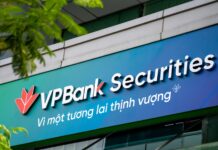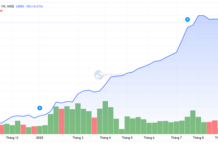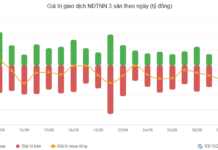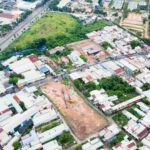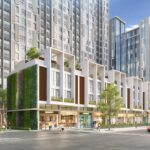The Infrastructure Landscape of Northeast Ho Chi Minh City
With a series of strategic transportation projects underway, this area is not only addressing traffic congestion but also unlocking new urban development spaces, laying the foundation for real estate to soar.
The Northeast region, particularly Di An, is emerging as an infrastructure hotspot with total investments reaching tens of trillions of VND. These projects not only enhance intra-city connectivity but also serve as vital links for the Southeast region, contributing to the formation of a new “megacity” following recent administrative mergers. According to experts, infrastructure accounts for 70% of the driving force behind socio-economic development, acting as the “golden key” for this area’s rapid growth.
Notable strategic infrastructure projects currently underway or in preparation include: The expansion of National Highway 13, aimed at increasing lanes from 6 to 10 and widening the road to alleviate congestion. The Binh Trieu – Binh Duong section features a 3.2 km elevated road, addressing a critical traffic bottleneck at the city’s gateway.
Ring Roads 3 and 4 help distribute traffic, reducing pressure on central urban roads while creating opportunities for real estate development along major transportation axes. Ring Road 3, a national-level project with an investment of 75.378 trillion VND and a length of approximately 76.34 km, passes through the Northeast region. Partial sections are expected to open this year, with full completion by June 2026, connecting Ho Chi Minh City’s inner districts with areas previously part of Binh Duong, Dong Nai, and Long An.
Metro Line 1’s extension from Suoi Tien to Thu Dau Mot is another highlight, enhancing connectivity between the Northeast region and the city center. This extension will integrate with existing stations, reduce road traffic, and promote the Transit-Oriented Development (TOD) model. Metro Line 2 (Thu Dau Mot – National Highway 13 – Ho Chi Minh City), passing through the Northeast, is expected to further improve regional connectivity. With a length of 21.87 km and an investment of over 40 trillion VND, this line is in the preparatory phase and is projected to connect directly with Metro Line 1 and other routes.
Additionally, the Saigon Riverbank Road, with a width of approximately 32 meters and a 13.6 km stretch through the Northeast, features 6 lanes and an investment of over 6 trillion VND. This project not only enhances transportation but also elevates urban aesthetics, connecting with the Ho Chi Minh City – Long Thanh – Dau Giay Expressway to become a new lifeline for the region.
Thanks to its multi-layered infrastructure, combining road, rail, and waterway networks, Northeast Ho Chi Minh City is gradually shaping into a new economic hub, with expectations of a 15–20% GDP growth over the next five years.
A Golden Opportunity for Investors Not to Be Missed
With key projects nearing completion, particularly Ring Road 3 (2026) and the extended Metro Line 1, coupled with a 25% increase in FDI and numerous industrial projects driving housing demand, the Northeast region of Ho Chi Minh City is entering a “golden period” for investment. Di An, in particular, is emerging as a “bright spot.”
In reality, following the announcement of National Highway 13’s expansion progress (Q1/2025), interest in Northeast real estate has surged by 32% (according to online platform data). While primary apartment prices in Ho Chi Minh City have risen by an average of 29% compared to 2024, the Northeast has seen increases of 35–40%, thanks to its connectivity advantages.
Along Metro Line 1, some projects have recorded a 50% increase in sales upon the metro’s operation.
Meanwhile, the Northeast’s population is projected to grow by 20% between 2025–2027, pushing housing demand from 50–55 million VND/m² to even higher levels, indicating robust market liquidity in the region.
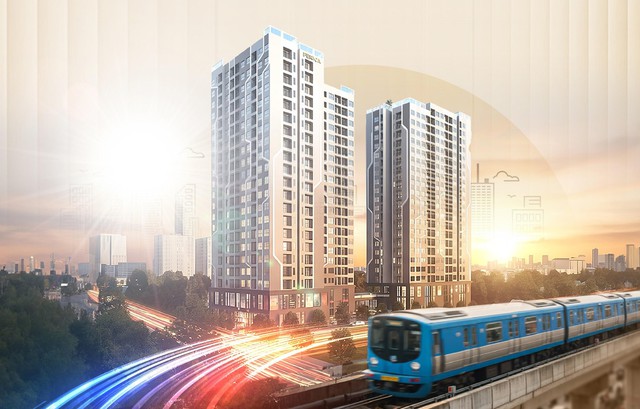
Rendering of the Fenica project – located at the gateway to Northeast Ho Chi Minh City
Many investors liken Di An today to “Thu Thiem 20 years ago”: as infrastructure improves, real estate values grow sustainably, forming a chain of satellite cities.
Experts predict that early investors could see price increases of 20–30% within the next 12–18 months.
Transparent Legal Apartments Reign Supreme as Ho Chi Minh City Faces Supply Shortage
Northeast Ho Chi Minh City’s real estate market is entering a new growth phase, fueled by significant infrastructure developments. Projects with transparent legal frameworks are highly sought after for their strong liquidity and ability to address pressing housing needs.
Factors Fueling the Unrelenting Rise in Condominium Prices
According to Mrs. Duong Thuy Dung, Executive Director of CBRE Vietnam, the enhanced quality of products has intensified competition among developers.
Citigrand: Exclusive Assets Redefining Investment Standards
In recent years, Ho Chi Minh City’s apartment market has seen an abundance of supply, yet most offerings lack distinctiveness, often mirroring each other in design and amenities. Consequently, numerous projects find themselves entangled in fierce price competition, struggling to sustain long-term value.

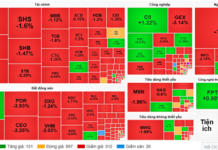








![VPBank Proudly Presents G-DRAGON 2025 WORLD TOUR [Übermensch] IN HANOI as Title Sponsor](https://xe.today/wp-content/uploads/2025/10/screen-sho-2-218x150.png)





